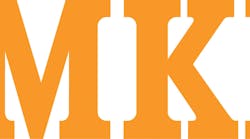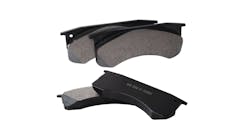Tractor and trailer wheel ends submerged in water require special procedures to restore them as outlined below. To avoid a possible catastrophic wheel end failure, never put a unit back into service without a complete inspection and repair as described in these guidelines.
CAUTION: Floodwaters can contain unknown and harmful chemicals. Take special precautions to protect technicians and the environment when handling wheel ends that were submerged in flood waters.
- Wear protective body equipment when exposed to contaminated wheel ends.
- Consult local EPA officials for proper handling and disposal procedures for contents of contaminated wheel ends. Properly dispose of hazardous waste following all EPA guidelines.
Inspection and restoration guidelines
1. Identify Wheel End Systems
- Refer to Timken TechTip CV3 - Identifying Wheel End Systems.
- Do the wheel ends have water-resistant or non-water-resistant hub caps?
- Are they lubricated with oil or grease?
- Do they contain a pre-adjusted, adjustable or unitized bearing package? Because some pre-adjusted wheel ends have limited rebuild capabilities, you should contact the wheel end manufacturer for rebuild instructions.
NOTE: Water causes wheel ends to corrode – degrading lubricants and metal components. Salt water is especially harmful.
2. Inspection and Cleaning of Wheel Ends
- Inspect every wheel end (refer to Timken TechTip CV1 - Wheel End Problems or TMC RP 644).
- Wash off chemical or other contamination from the exterior of all wheel ends, in a location with approved drainage and run-off collection capabilities.
- Properly dispose of all drained lubricant. Depending on the level and type of chemical contamination in the lubricant, disposal methods may differ.
3. Restoring Wheel Ends with Water-Resistant Hub Caps
- Remove hub cap.
- If lubricated with oil, drain into an approved container. Dispose of oil properly if it is contaminated with water or other chemicals.
- If oil is contaminant free, reinstall the hub cap with a new gasket and refill to the proper level (refer to Timken TechTip CV11 - Proper Lubrication for Wheel Ends or TMC RP 631B).
- If lubricated with grease, follow the recommended annual inspection procedure for grease wheel ends (refer to Timken TechTip CV11 - Proper Lubrication for Wheel Ends or TMC RP 631B). You will need to remove the outer bearing and inspect the hub cavity for proper lubricant level and condition.
- If grease is contaminant free, ensure proper grease level and reassemble (refer to Timken TechTip CV11 - Proper Lubrication for Wheel Ends or TMC RP 631B).
- If grease is contaminated, follow the disassembly steps outlined in step 4.
4. Restoring Wheel Ends with Non-Water-Resistant Hub Caps
NOTE: Tire inflation system hub caps do not provide water resistance.
- Remove hub cap.
- Drain wheel end lubricant into an approved container and dispose of properly.
- Disassemble the wheel end.
- Inspect the bearings and outer races for rust, discoloration or other damage (refer to Timken TechTip CV2 - Tapered Bearing Damage). If there is any sign of rust, discoloration or other damage, replace the bearings and outer races.
NOTE: For aluminum hubs, refer to the manufacturer’s guidelines for proper installation of bearing outer races.
- Inspect axles and hubs for signs of rust or discoloration. If rust is present, remove it with an emery cloth.
NOTE: It is imperative to remove rust on the axle bearing journals and seal shoulder and in the hub bearing and seal bores.
- Clean all reusable components in solvent and dry properly.
- Lubricate bearings and axles appropriately with the same type lubricant used in the hub (refer to Timken TechTip CV11 - Proper Lubrication for Wheel Ends or TMC RP 631B).
- Reassemble the wheel end.
- Ensure bearings are adjusted properly (refer to Timken TechTip CV7 - Bearing Adjustment Basics or TMC RP 618B).
NOTE: Using a dial indicator, verify bearing adjustment is 0.001" to 0.005" end play.
Additional Resources
Information from: Timken



